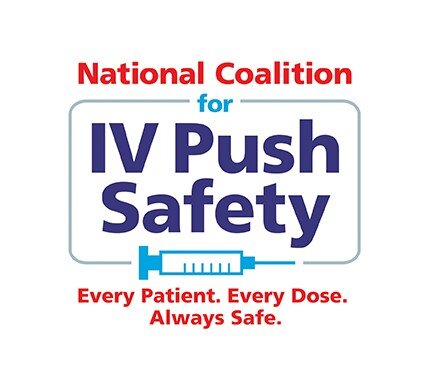While the need to administer an IV push dose of regular or rapid acting insulin is rare, it is often urgent/emergent. Thus, a defined procedure should be established to ensure that supplies are readily available, and the process is uniform and safe.
Syringes for insulin administration via the IV route are manufactured with a needleless tip to facilitate injection into a tubing Y-site. These are marked in units, just like insulin syringes with needles that are for subcutaneous administration. It is not optimal to use a needle to inject insulin through a needleless connector, as this can cause a leak and could result in incomplete drug delivery if the needle does not fully penetrate. It is similarly improper to transfer insulin from one syringe into another due to potential dose inaccuracy and infection control breaches. So, it is important that your hospital stock Luer tip insulin syringes.
Unfortunately, the need for special equipment in an urgent/emergent setting is problematic. Standardized stocking should be established throughout a facility. While it may be best to store insulin IV syringes away from other syringes to avoid confusion, they need to be readily available. The IV insulin syringes could be stocked with other insulin syringes if clearly labeled for site of administration. Make sure they are not removed from stock due to low use. They can be stocked in an emergency resuscitation cart, although the insulin itself will likely be in another location. If insulin is stocked in an automated dispensing cabinet (ADC) for emergency use only, the syringe can be stocked with it. If insulin pens are used for subcutaneous therapy, they should never be used for IV administration.
An alternative is to have the insulin prepared by the pharmacy for IV push administration and delivered to the patient emergently if that department is staffed for rapid 24 x 7 response. Alternatively, the pharmacy can prepare an emergency kit that contains an insulin vial, an insulin-specific syringe for IV administration, 50% dextrose, a needle to draw up the insulin from the vial, a label for the syringe, alcohol swabs, flush syringes, and instructions for use. Kits should be readily accessible, such as in an ADC. While insulin appears to be stable at least 2 weeks when diluted in saline, the error risk of using a different concentration may be significant. It is preferred that diluted insulin not be prepared by the pharmacy. Further, dilution, room temperature storage, and syringe materials influence stability of the preservative.
Procedure
1. Draw up the ordered dose of insulin (regular, aspart, lispro, or glulisine) into an insulin-specific syringe for IV administration. (Or obtain STAT from the pharmacy)
a. Do not dilute the insulin.
b. Do not draw insulin from a 3ml cartridge or insulin pen.
c. An independent double-check of the type of insulin and the dose is recommended, also to verify the lab result.
2. Flush Y site if saline-locked. Choose site as close to catheter hub as possible, as insulin will stick to tubing surfaces.
a. Of course, follow best practice procedures for IV administration (hand hygiene, site swabbing, etc.)
b. If a continuous medication infusion line is your only access, do not flush as you will bolus the medication into your patient– start another site.
3. If pushing undiluted insulin, inject insulin rapidly IV push.
a. If following ACLS guidelines, mix 50 ml 50% dextrose in a mini-bag with 10 unit regular insulin and give IV over 15 - 30 minutes.
4. Administer dextrose as ordered- push 25 gm over at least 5 minutes (25% or 50%) or infuse 10% dextrose at 5-=75 ml/hr.
5. Flush the IV site with 0.9% sodium chloride.
6. Monitor blood glucose routinely until stabilized (may be 4-6 hours)
Errors with IV insulin occur when the electronic ordering system defaults to the subcutaneous route. Using a pre-defined order set is important to minimize this risk. Dosing errors are also common, especially if a standard syringe marked in ml is used instead of an insulin syringe (tendency to give 1 ml rather than 0.1 ml). Most of these errors lead to patient harm.
While a dose of 10 units is traditional, increasing amounts of literature suggest than lower doses may be safer to avoid hypoglycemia, especially in smaller patients, women, renal insufficiency, baseline glucose < 150 mg/dL). The 10-unit dose may be more effective for significant potassium elevations (> 6 mEq/L), but the response is generally comparable when comparing 5- vs. 10-unit doses. Repeated glucose levels every 30-60 minutes for 4-6 hours (or longer) are needed after IV insulin to identify hypoglycemia, as insulin lasts longer than glucose via a bolus dose.
Hyperglycemia Treatment and IV Push insulin – Through an IV Pump
Some protocols for continuous insulin therapy include a bolus dose of IV insulin. While you should always follow your hospital protocol, it is safest to give these bolus doses through the IV pump, rather than drawing it up in a syringe. The pump safety mechanisms and ability to select the desired number of units is likely to be safer.
Selected References:
https://www.ismp.org/resources/medication-errors-during-insulin-administration-patients-hyperkalemia
Apel J, Reutrakul S, Baldwin D. Hypoglycemia in the treatment of hyperkalemia with insulin in patients with end-stage renal disease. Clin Kidney J. 2014;7(3):248–250.
LaRue HA, Peksa GD, Shah SC. A comparison of insulin doses for the treatment of hyperkalemia in patients with renal insufficiency. Pharmacotherapy 2017; 37:1516-1522
Lawes S, Grissinger M. Treating hyperkalemia: Avoid additional harm when using insulin and dextrose. Pa Patient Saf Advis. 2017;14:1-11.
Moussavi K, Nguyen LA, Hua H, Fitter S. Comparison of IV insulin dosing strategies for hyperkalemia in the emergency department. Crit Care Explor 2020; 2:e0092
AHA : Part 10 : Special circumstances of resuscitations, October 2010. https://eccguidelines.heart.org/wp-content/themes/eccstaging/dompdf-master/pdffiles/part-10-special-circumstances-of-resuscitation.pdf

